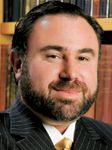- Acne
- Actinic Keratosis
- Aesthetics
- Alopecia
- Atopic Dermatitis
- Buy-and-Bill
- COVID-19
- Case-Based Roundtable
- Chronic Hand Eczema
- Chronic Spontaneous Urticaria
- Drug Watch
- Eczema
- General Dermatology
- Hidradenitis Suppurativa
- Melasma
- NP and PA
- Pediatric Dermatology
- Pigmentary Disorders
- Practice Management
- Precision Medicine and Biologics
- Prurigo Nodularis
- Psoriasis
- Psoriatic Arthritis
- Rare Disease
- Rosacea
- Skin Cancer
- Vitiligo
- Wound Care
Article
BBL, laser combination may maximize hair removal outcomes
National report - Both the 1064 nm Nd:YAG laser and broadband light (BBL) source are safe and effective modalities for hair removal, but even better results may be achieved using them in combination, according to the results of a study undertaken by Michael H. Gold, M.D., medical director, Gold Skin Care Center and The Laser and Rejuvenation Center, Nashville, Tenn.

The trial is investigating axillary hair removal and will enroll up to 15 patients. In each patient, the right and left axillae are divided in half, giving four quadrants for treatment with BBL alone, a computer-scanned 1064-nm laser alone, both BBL and the laser or to be left as an untreated control site. The treatments are being repeated three times at one-month intervals, and percent reduction from baseline hair count at one month after the third treatment is the primary efficacy endpoint.
Dr. Gold reports results for the initial three patients showing that all treatments were well-tolerated, but that the combination technique was associated with the greatest average reduction in hair count. In the three patients, average percent reductions in hair count were 51 percent for sites treated with BBL alone, 48 percent using the 1064 nm laser, and 63 percent for the combination technique.
The treatments were done without any anesthesia, but both the BBL and the scanned 1064-nm laser feature bulk cooling of surrounding tissue. Treatments are performed after applying a thin layer of colorless gel to the treatment site, and parameters for both devices are adjusted based on skin type and hair darkness, diameter and density.
The BBL is used with cut-off filters of 590 nm, 640 nm or 695 nm at fluences ranging from 5 J/cm2 to 20 J/cm2 and a pulse width of 15 ms to 50 ms. At the first session, the 1064 nm laser was used at fluences of 50 J/cm2 to 70 J/cm2 and a pulse width of 10 ms to 50 ms; the fluence is increased at subsequent sessions based on previous response.
Patients are rating pain during and after treatment on a scale of 0 (none) to 4 (most severe). The highest pain score reported so far was a 2.1 by one patient during BBL treatment, but otherwise the scores ranged from 0 to 1.6. Scores in all patients showed discomfort was greater during treatment versus after treatment, and that for the most part, the BBL procedure was more uncomfortable than the laser treatment.
Minimized discomfort
"1064 nm laser treatment can be painful, but the aggressive cooling provided by this laser system minimizes discomfort so that the procedure is even less painful than with the BBL source," Dr. Gold says.
The only adverse event encountered was the development of transient hyperpigmentation at a site treated with the 1064 nm laser in a patient with type IV skin.
"This problem occurred in association with use of pulses shorter than recommended by the protocol, resolved spontaneously and did not recur when the treatment was repeated with longer-width pulses," Dr. Gold says.
The BBL and laser used are part of a commercially available modular system (PROFILE; Sciton) that can also be used for acne treatment, vascular lesions, most pigmented lesions, nonablative skin rejuvenation and superficial skin peeling (MicroLaserPeel).
"Platforms combining multiple modules that can be used with turn-key convenience is the new wave in the area of lasers and light technology and has great appeal for affording physicians the opportunity to offer a broad range of procedures with less capital expenditure and less requirement for physical space," Dr. Gold notes.
The scanned 1064 nm Nd:YAG laser used in the study is state-of-the art technology. It features a large area pattern generator (LAPG) that treats individual hairs with a small beam in an area measuring up to 30 mm x 30 mm in a uniform, but non-sequential manner. The energy is delivered by the high-fluence scanner in a non-Gaussian, top-hat beam profile at a lower energy, compared with devices using large-field beams and at a shorter pulse width. The penetration characteristics are ideal to target the follicle and a variety of hairs, but minimize unnecessary thermal heating of deeper tissue layers.
"This technology treats just a hair or two per pulse, but the photoepilation procedure is both more operator- and patient-friendly than hair removal performed with large-spot devices. With this laser, hair removal is less tedious, faster and more comfortably," Dr. Gold says.
Disclosure: Dr. Gold is a consultant for Sciton and receives research grants from that company.
Newsletter
Like what you’re reading? Subscribe to Dermatology Times for weekly updates on therapies, innovations, and real-world practice tips.














